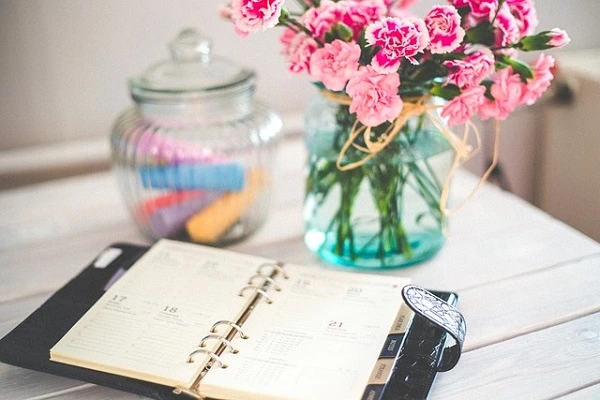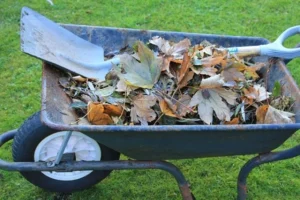If you’ve ever peeked at your vertical hydroponic seedlings in the morning and noticed a bit of fuzz where it shouldn’t be—or a suspicious smell—you’re not alone.
Seeding areas are delicate. A little moisture in the wrong place, or a stray leaf stuck under a tray, can quickly become a bigger problem.
In a small apartment, there’s no room for mess. And when you’re working with a vertical system, every inch counts.
That’s where smart microtasks come in. These are tiny habits you can weave into your daily routine to keep things clean, without adding stress.
A few mindful minutes each day can prevent mold, pests, and wasted seedlings. Let’s look at how to keep your grow space fresh, fast, and frustration-free.
The Unique Challenges of Indoor Seeding in Small Spaces
Starting seeds indoors sounds easy—until you actually do it in a small apartment with a vertical system tucked between your kitchen and your bookshelf.
It doesn’t take much for things to go sideways. A little extra humidity. A forgotten damp spot. One dropped seed casing.
Why Small Spaces Amplify Problems
In a compact apartment, airflow is limited. That’s especially true when your seeding area is squeezed into a corner or closet.
Vertical systems, while efficient, stack moisture and warmth. That makes your grow space the perfect environment for mold, algae, and gnats—if you’re not careful.
There’s less room for airflow and fewer places for excess moisture to go. And unlike outdoor gardens, nature won’t balance it out for you.
Seeding = The Most Sensitive Phase
Your seedlings are at their most fragile during these early days. They don’t have strong roots yet, and they can’t fight off mold or bacteria the way mature plants can.
This is the phase where cleanliness matters most—and where daily maintenance is easiest to ignore.
The Case for Prevention, Not Cleanup
Most people wait until they see a problem to act. By then, it’s often too late to save your tray.
That’s why microtasks work so well in small-space hydroponics. They’re preventive, fast, and give you early warning if something’s off.
Think of it as your daily check-in. A few minutes now saves hours of frustration later.
Microtasking Defined: What It Is and Why It Works
Let’s face it—maintenance can feel like a chore. When you’re balancing work, life, and a vertical hydroponic setup in a small apartment, even five minutes can feel like a stretch.
That’s where microtasking comes in.
What Is a Microtask?
A microtask is a small, specific action you can do in under five minutes. No setup. No mess. Just one quick thing that keeps your grow space running smoothly.
Think of it as brushing your teeth for your plants.
These aren’t big, deep-clean moments. They’re low-effort habits you can stack into your existing routine.
Why Microtasks Actually Work
Big cleaning sessions are great in theory—but easy to avoid. They take time, and by the time you get around to them, you’re usually cleaning up a mess that’s already causing problems.
Microtasks flip that.
They’re:
- Quick to do
- Easy to remember
- Effective at stopping problems before they start
And when something does go wrong, you’ll catch it faster—because you’re already checking in daily.
Build a Daily Flow
The trick is to pair a microtask with something you already do. Maybe you mist your seedlings every morning. That’s the perfect time to wipe down a shelf or dab away pooled water.
By linking small tasks to your routine, they become automatic—and suddenly, maintenance feels like no big deal.
Small actions. Big impact. That’s the power of microtasking.
Microtask #1: Daily Surface Wipe-Down
One of the simplest ways to keep your seeding area clean is to wipe down surfaces every day. It only takes a couple of minutes but makes a huge difference.
Seed trays, shelves, and even your grow lights can collect dust, water spots, and tiny bits of debris.
Why Wiping Matters
Dust and moisture build-up create the perfect environment for bacteria and mold. In a small vertical system, this can spread quickly.
A quick wipe removes these potential troublemakers before they have a chance to take hold.
How to Make It Easy
- Use a damp microfiber cloth or alcohol wipes.
- Focus on tray edges, shelf surfaces, and the area under trays.
- Wipe down LED lights carefully to avoid damage.
Tie It to a Routine
Try doing your wipe-down at the same time every day, like right before or after watering. Linking it to a daily habit makes it less likely to slip your mind.
Keep Your Tools Handy
Keep your cloth or wipes stored close to your system. Having everything ready means you can do the wipe-down in under five minutes—no excuses.
The Payoff
This small habit helps prevent mold growth and keeps algae at bay, which means healthier seedlings and less stress.
Remember, a clean surface isn’t just about looks; it’s about giving your seedlings the best start possible.
Microtask #2: Moisture Check & Tray Dry Spot
One of the sneakiest problems in seeding areas is excess moisture. Standing water or damp spots can quickly lead to mold, algae, or root rot.
That’s why a quick daily moisture check is a smart microtask.
What to Look For
Check under and around your seed trays for any pooling water or damp patches.
Pay special attention to corners or edges where water might collect unnoticed.
Why Drying Matters
Even a small puddle can become a breeding ground for unwanted growth.
Drying these spots stops problems before they start, keeping your seedlings healthier.
How to Handle It
Keep a small microfiber towel or some absorbent paper towels nearby.
If you spot moisture, gently dab it up—no rubbing needed.
Make It Easy
Clip a towel close to your seeding area or inside a drawer nearby.
When you water your seedlings, take a quick moment to scan for wet spots and dry them up.
Bonus Benefits
Besides preventing mold, keeping the area dry reduces mineral buildup, like calcium deposits, which can clog trays and slow water flow.
This simple daily habit protects both your plants and your system.
A quick moisture check is one of those tiny tasks that pay off big over time.
Microtask #3: Leaf Litter & Debris Patrol
Even the healthiest seedlings drop the occasional leaf or seed husk. It might not seem like a big deal—but in a tight, humid space, that tiny bit of debris can cause big problems.
Dead plant material attracts pests and holds moisture. Not ideal in a seeding area.
What to Look For
- Yellowing or fallen leaves
- Detached seed husks or seed coats
- Bits of soil or growing medium outside of trays
These are all signals it’s time for a quick sweep.
Your Daily Patrol
Once a day, give your seeding area a visual scan. Look between trays and around the base of your seedlings.
Use tweezers or your fingers (gloved, ideally) to remove anything that doesn’t belong.
Make It Part of the Process
While misting or adjusting lights, just take a moment to check for debris. It doesn’t need to be perfect—just consistent.
Over time, this habit prevents mold growth, deters fungus gnats, and keeps everything looking sharp.
Pro Tip: Keep a Small Container Nearby
A little jar or bin for dead leaves and scraps makes cleanup quicker. Toss the contents into your compost or trash at the end of the week.
Why It Works
Clean surroundings lead to healthy starts. Leaf litter may seem harmless, but it’s often the first thing that turns a tidy seeding area into a breeding ground for problems.
This daily patrol is your low-effort shield against a messy—and potentially risky—grow space.
Microtask #4: Quick Light & Fan Dust Check
Lights and fans work hard in a vertical hydroponic setup—especially in small spaces where airflow and light coverage are crucial.
But here’s the thing: dust loves these surfaces. And when it builds up, it can quietly reduce performance without you even noticing.
Why Dust Is a Problem
Dust blocks light output and clogs airflow. That means your seedlings get weaker light and less fresh air—two things they absolutely need.
It doesn’t take much buildup to start affecting growth.
The Quick Daily Check
You don’t need to clean everything every day. Just look at your lights and fans during your regular routine.
If you see visible dust collecting, make a note to clean it soon—or give it a quick swipe if you’ve got time.
Tools That Help
- A small Swiffer or microfiber duster
- Canned air for tight fan grills
- A soft brush for LEDs
Keep these nearby, maybe in the same drawer as your seedling tools. Easy access means you’re more likely to use them.
Set a Weekly Clean Reminder
Even though this is a “check,” not a full clean, you can schedule a deeper dusting once a week. The daily habit just helps you stay ahead of the mess.
Small Task, Big Effect
Clean airflow and clear lighting mean stronger, healthier seedlings. It’s that simple.
A quick look, a swipe here and there, and you’re keeping your system running smoothly—without adding a major task to your plate.
The Bottom Line
You don’t need to overhaul your whole setup or carve out hours to keep your seeding area clean. Just a few smart, daily microtasks can make all the difference.
They take minutes, but they help you stay ahead of pests, mold, and mess—before anything spirals out of control.
These little actions add up. Wiping a shelf, spotting a damp corner, or flicking away a dead leaf keeps your space fresh and your seedlings happy.
And when your seedlings thrive, your whole hydroponic system runs better.
So keep it simple, stay consistent, and let your daily habits do the heavy lifting.




